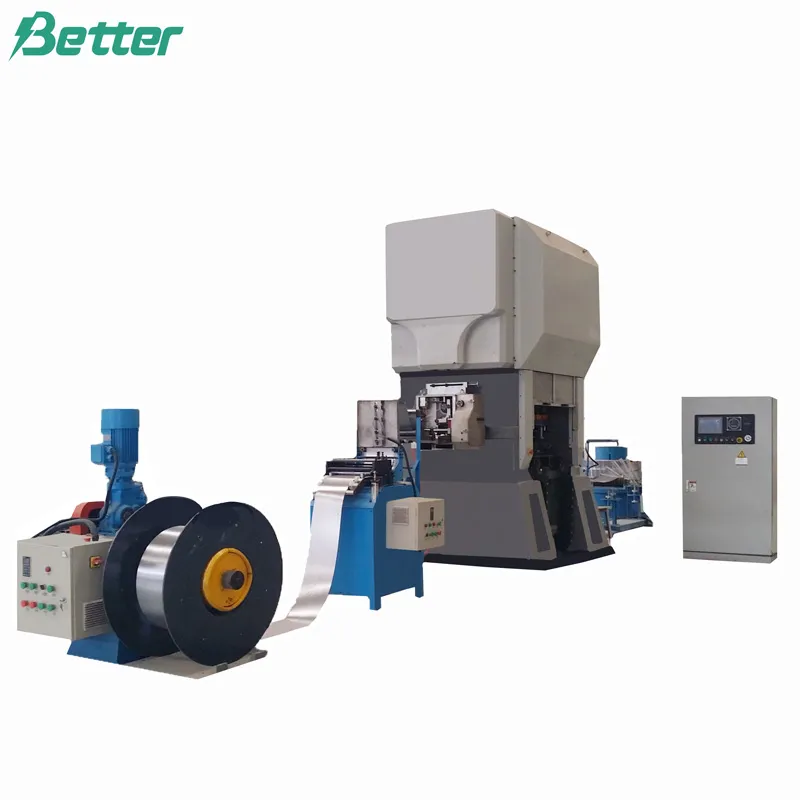
Why Battery Tabs Need Precision Punching Explained
2025-11-19 14:35Contents
What Battery Tabs Actually Do
Battery tabs are the small metal strips that connect the internal electrode foils to the outside terminals. In lithium-ion pouch cells, prismatic cells, or even some lead-acid designs, these tabs carry all the current in and out of the battery. They look simple, but everything from charging speed to safety depends on how clean and accurate those tabs are made.
Why Precision Matters in Tab Punching
Punching is the process where the tab shape is cut out from aluminum or nickel-coated copper foil, sometimes with an extra nickel tab welded on. If the punch is off by even 0.02 mm, the tab edge can have tiny burrs or tears. Those imperfections become trouble later: burrs pierce the separator, tears create weak spots that break under vibration, and uneven widths mess up ultrasonic welding to the terminal.
Precision punching also controls the tab length and position. When tabs from positive and negative foils need to line up perfectly for stacking or winding, any shift means the whole cell assembly slows down or gets rejected.
Common Problems When Tabs Are Not Punched Precisely
Poor tab quality shows up fast in production and later in the field.
During cell assembly, misaligned or burred tabs cause welding failures—the ultrasonic welder alarms or makes weak joints that increase internal resistance.
In safety testing, burrs can penetrate the separator and trigger internal short circuits during nail penetration or overcharge tests.
In everyday use, rough tab edges heat up more because current crowds into the narrow undamaged sections, leading to faster capacity loss or, in extreme cases, thermal runaway.
Factories using manual dies or low-end single-station punch presses see rejection rates of 5-15% just because of tab issues. That adds up quickly when you're running thousands of cells per day.
How a Punching Line Machine Works in Real Production
A modern punching line machine is not just one press—it's a continuous roll-to-roll system. The foil comes off a big roll, goes through tension control, gets punched at high speed with servo-driven dies, then the skeleton waste is rewound separately while the punched foil continues to coating or slitting.
Most lines run at 30-100 meters per minute, depending on tab complexity. CCD cameras check every single tab in real time and reject bad ones before they reach the next process. The die sets are carbide or even diamond-coated for long life, and quick-change systems let you switch from 50 mm tabs to 120 mm tabs in under 30 minutes.
Some advanced punching line machines can punch both positive and negative tabs in one pass, or even punch the tab and weld the nickel strip at the same station.

Key Features to Look for in a Modern Punching Line
Look for servo-electric drives instead of hydraulic—they give repeatable accuracy down to ±0.01 mm and use much less power.
Closed-loop tension control keeps the foil flat so tabs don't stretch or wrinkle during punching.
Automatic die lubrication and chip extraction prevent aluminum dust buildup that ruins edge quality.
Real-time vision inspection with auto-reject is now standard on good machines; it saves more material than you think.
Integration-ready design (OPC-UA or EtherCAT) lets the punching line talk to the rest of your MES system so you can trace every tab back to its parent roll.
Benefits of Using a Dedicated Punching Line Machine
Factories that move from manual or semi-automatic punching to a proper punching line typically see:
• Edge burr height drop from 50 µm to under 5 µm
• Material yield improve by 3-8% because less trimming is needed
• Welding yield go from 85% to over 98%
• Overall tab-related scrap fall below 1%
Speed is obvious—you punch hundreds of tabs per minute instead of dozens—but consistency is the real money saver. When every tab looks identical, the rest of your line runs smoother, fewer operators are needed for inspection, and your customers get more reliable batteries.
Our Recommended Solution
At Better Tech Group, we have spent years refining punching line machines specifically for battery manufacturers. Our latest model handles aluminum, copper, and multi-tab designs with the precision and speed growing factories need. You can see the full specifications and request a layout drawing here.
